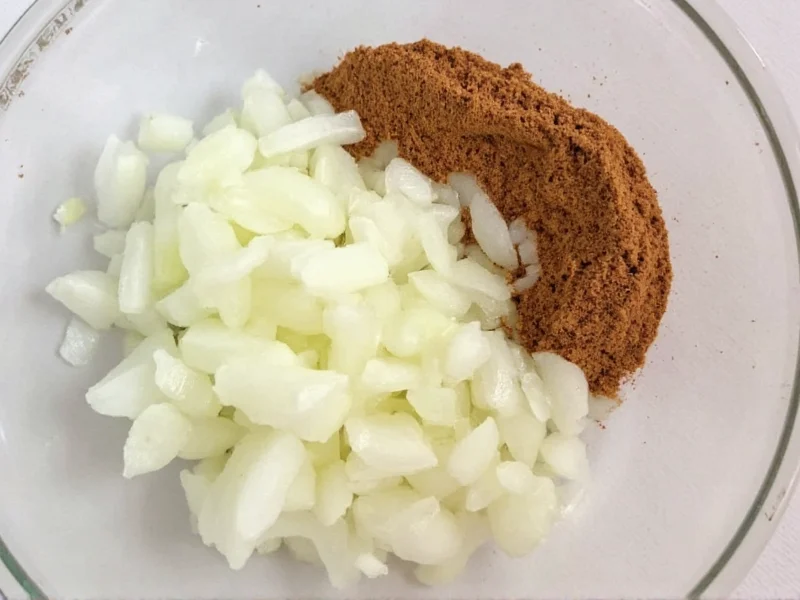Understanding the proper conversion between fresh onions and onion powder is essential for consistent cooking results. Many home chefs struggle with recipe substitutions, leading to dishes that are either too bland or overpoweringly onion-flavored. The key lies in recognizing that dehydration concentrates onion flavor while removing moisture.
Why Fresh Onions and Onion Powder Aren't a 1:1 Substitute
Onion powder contains no water, while fresh onions are approximately 89% water. When you dehydrate onions, you're removing this moisture and concentrating the flavor compounds. This fundamental difference explains why you can't simply replace one fresh onion with an equal volume of onion powder.
The conversion ratio varies slightly depending on several factors including onion variety, growing conditions, and the specific dehydration process used to create the powder. Generally, the more water removed during processing, the more potent the resulting powder becomes.
Comprehensive Onion to Onion Powder Conversion Chart
| Fresh Onion Measurement | Equivalent Onion Powder | Best For |
|---|---|---|
| 1 small onion (1/2 cup chopped) | 1 tablespoon | Delicate sauces, dressings |
| 1 medium onion (1 cup chopped) | 2-3 tablespoons | Most recipes, soups, stews |
| 1 large onion (1 1/2 cups chopped) | 3-4 tablespoons | Hearty dishes, marinades |
| 1 cup fresh onion | 3 tablespoons | Precise baking measurements |
Factors Affecting Conversion Accuracy
Several variables influence the precise conversion ratio between fresh onions and onion powder:
- Onion variety - Yellow onions have stronger flavor than sweet varieties like Vidalia
- Moisture content - Varies by growing season and storage conditions
- Powder quality - Commercial powders differ in concentration and additives
- Processing method - Freeze-dried versus oven-dried creates different potency levels
When to Use Each Form in Recipes
Chefs choose between fresh onions and onion powder based on desired texture, flavor release, and cooking method:
Fresh onions work best when you want distinct texture, gradual flavor release during cooking, or visual appeal in finished dishes. They're ideal for salsas, stir-fries, and dishes where onion pieces should remain recognizable.
Onion powder shines in applications requiring quick flavor integration, consistent seasoning, or where moisture content matters. It's perfect for dry rubs, spice blends, baked goods, and recipes with short cooking times where fresh onions wouldn't have time to mellow.
Creating Your Own Onion Powder
Homemade onion powder often provides superior flavor compared to commercial versions. To make your own:
- Peel and thinly slice 2-3 pounds of onions
- Dehydrate at 135°F (57°C) for 6-10 hours until completely brittle
- Grind to fine powder using a spice grinder
- Store in airtight container away from light and moisture
Homemade powder typically has a stronger flavor than store-bought varieties, so you may need to adjust conversion ratios downward by about 25%. Start with smaller amounts and taste as you go.
Common Substitution Mistakes to Avoid
Many cooks make critical errors when substituting between fresh onions and powder:
- Using equal volumes without accounting for concentration
- Not adjusting liquid content in recipes when substituting
- Ignoring the different flavor release timelines
- Using onion powder in raw applications where fresh would be expected
When converting recipes, remember that onion powder dissolves immediately while fresh onions need time to cook and mellow. In long-cooking dishes, you can often use slightly less powder than the standard conversion suggests, as the flavor will continue to develop throughout cooking.
Practical Recipe Applications
Consider these real-world examples when substituting:
For a soup recipe calling for 1 medium chopped onion, use 2-3 tablespoons of onion powder added with other dry spices at the beginning of cooking. You might reduce other liquids by 1-2 tablespoons to account for the missing onion moisture.
In a meatloaf recipe requiring 1 cup fresh onions, substitute 3 tablespoons onion powder mixed with 2 tablespoons water to approximate the moisture content. Add this mixture with your other wet ingredients.
When making salad dressing that calls for minced raw onion, avoid substituting powder entirely as the texture and fresh bite are essential. Instead, use a small amount (1/2 teaspoon) of powder along with a splash of vinegar to mimic some of the sharpness.











 浙公网安备
33010002000092号
浙公网安备
33010002000092号 浙B2-20120091-4
浙B2-20120091-4